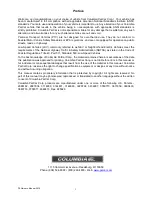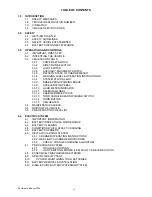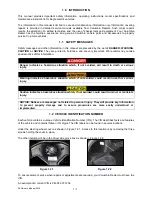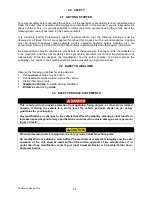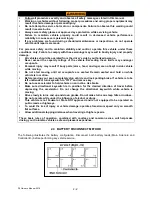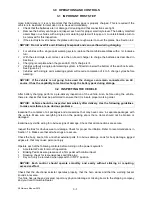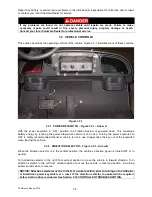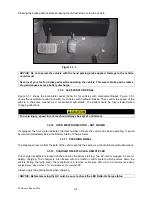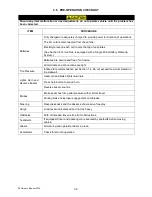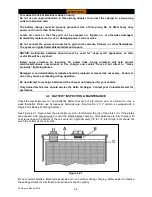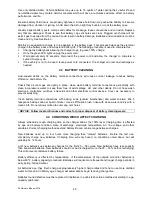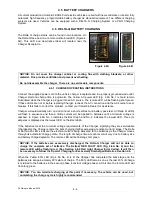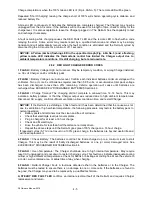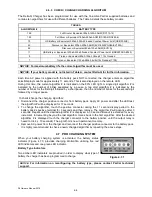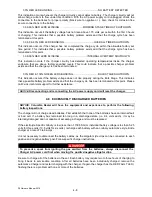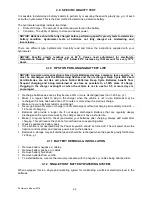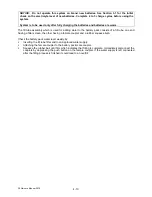
P4
Owner’s Manual 2015
3.0 OPERATIONS AND CONTROLS
3.1 IMPORTANT FIRST STEP
Upon initial delivery, it is very important that the battery pack is properly charged. This is required if the
vehicle is to be stored for later use or is to be used immediately.
Check that the batteries are not damaged or leaking and that connections are tight.
Remove the battery vent caps and inspect each cell for proper electrolyte level. The battery manifold
assemblies on vehicles with a single point watering system will require a ¼ counterclockwise turn to
be removed for this inspection.
If the electrolyte level is below the plates add only enough water to cover the plates. See Section 4.2.
NOTICE
: Do not overfill a cell. Electrolyte expands and can overflow during charging.
For vehicles with a single point watering system, replace the manifold assemblies with a ¼ clockwise
turn.
With the electrolyte level correct, use the on board charger to charge the batteries as described in
Section 4.
Charging is complete when the green LED 100% charge is lit.
Vehicles without a single point watering system, refill cells to below the bottom of the each cell vents.
See Figure 4.2.1.
Vehicles with a single point watering system will require completion of 4 to 5 charge cycles before
watering.
NOTICE
: If the vehicle is not going to be used the charger can remain connected to an AC
source. It has the capability to test and recharge the battery pack during storage.
3.2 INSPECTING THE VEHICLE
After battery charging, perform a pre-delivery inspection of the vehicle. Also, before using the vehicle,
there are checks that must be performed to ensure that it is in safe proper working order.
NOTICE:
Vehicle should be inspected immediately after delivery. Use the following guidelines
to make sure there are no obvious problems.
Examine the contents of all packages and accessories that may have come in separate packages with
this vehicle. Make sure everything listed on the packing slip is there. Items should not be broken or
damaged.
Examine any visible wiring for obvious signs of damage. Check that all connections are secure.
Inspect the tires for obvious wear or damage. Check for proper tire inflation. Refer to recommendations in
Section 1.4. Make sure that all wheel lugs are secure.
Check the body, seats, trim and other external parts for obvious damage. Look for body damage, jagged
edges etc. that may cause personal injury.
Operate each of the following controls before turning on the power keyswitch.
Accelerator Pedal for smooth operation.
Braking Pedal, assure presence of a firm pedal with minimal travel.
Steering, check for responsiveness and little play.
Key can only be re
moved when keyswitch in “OFF” position.
NOTICE
: Each control should operate smoothly and easily without sticking or requiring
excessive effort.
Check that the directional selector operates properly, that the horn works and that the warning buzzer
sounds in reverse.
If vehicle has just been delivered, report any physical damage or missing items to the shipping company
and your local Columbia Dealer.
3-1


